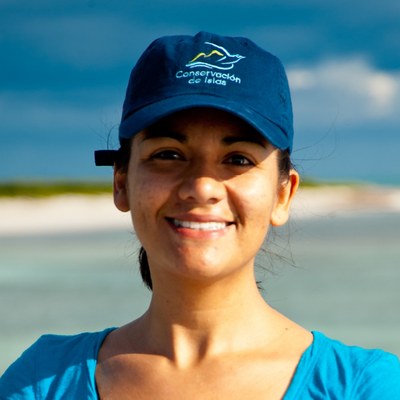Yuliana Bedolla

Fields of interest / focus of work
Ecological segregation among three Mexican storm-petrels Oceanodroma spp.
Three petrels of the genus Oceanodromoa spec. (Black storm-etrel (O. melania), Leach´s storm-petrel (O. leucorhoa), Least storm-petrel (O. microsoma)) breed on San Benito, Mexico. We study on differences in foraging ecology during chick provisioning and year-round distribution. The diet analysis of egg membranes using stable isotope analysis showed that Black storm-petrels feed more on crustaceans, than the two other, smaller species. Those feed primarily on fish larvae. The Gulf of California was identified as the potential foraging area. Blood samples showed that Black storm-petrels and Leach´s storm-petrels are infected by a blood parasite of the genus Hepatozoon in varying degrees. Black storm-petrels had 74% of these parasites in their blood and Leach´s storm-petrels have 6%. This might have an impact on parental care, chick growth and survival rates. Of all registered eggs, 61% of Black storm-petrel chicks survived. Furthermore, chicks showed typical procellariiform growth patterns. Wings and tarsi followed logistic growth and the mass of the chicks increased rapidly until the climax was reached at 83 g. The parents did not indicate obvious changes between long and short foraging trips. However, the recording method radio telemetry will be be replaced by RFID (Radio frequency identification method) to increase the number of data. Then, the chipped animals are detected by a sensor on their return and departure from nests and there is no necessity to determine their attendance by telemetry.
